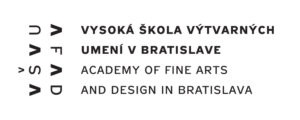Would you like to know the history of Katowice? Are you interested in the architecture of the capital of Silesia? We would like to invite you to a series of meetings, whose aim is to reveal the developmental history of the city through the development of architecture and urban planning.
At the turn of February and March, we will be receiving our gests – students at VSVU in Bratislava. Their purpose of the visit is to learn about the architectural specificity of Katowice and its icons. The event takes place within the Shared Cities: Creative Momentum project. We especially welcome our English-speaking guests, who would like to learn about the history of the place they reside in.
Shared Cities: Creative Momentum is a European cultural platform addressing the urban challenges of contemporary European cities. SCCM is a joint project of Goethe-Institut (DE), Czech Centres (CZ), reSITE (CZ), Academy of Fine Arts and Design in Bratislava (SK), Association of Belgrade Architects (RS), Contemporary Architecture Centre (HU), Katowice City of Gardens (PL), KUNSTrePUBLIK (DE), Mindspace (HU), Old Market Hall Alliance (SK), Res Publica – Cities Magazine (PL). Co-funded by the Creative Europe Programme of the European Union.
The beginnings of an industrial town – Katowice's foundation in the second half of the 19th century. Lecture
At the turn of the 18th century, Katowice was a small village situated on the Rava stream, close to the triangular border point of the three superpowers of the time: Russia, Prussia and Austria (later called the Dreikaiserreichsecke – the Three Emperors’ Corner). A few industrial entrepreneurs of that period opened their businesses in the countryside, starting their pioneering experimentation with coal mining and iron making. In 1839, Franz Winckler, a very talented industrialist, decided to move the head office of his company to Katowice, where, together with his former school mate, Friedrich Wilhelm Grundmann, they were planning to found a modern industrial. The untimely death of his friend left Grundmann with an urge to complete the project without delay.
The aim of the lecture is to reconstruct the circumstances of the town’s foundation. As the founding fathers of the city were Freemasons, its planning layout reveals some features typical of Masonic rituals. The architectural shape of Katowice’s city fabrics from in its early days is a very interesting achievement of an urban commune consisting of representatives of three different religious denominations, as the most active town patrons included Protestants, Catholics and Jews. The cooperation and competition among them led to the transformation of a provincial village into a modern industrial centre.
Katowice – 3 steps of progress in architecture from 1922 up to the present. Lecture
Katowice (formerly the Prussian city of Kattowitz) became the capital of the autonomous region which belonged to Poland in the interwar years (1922-1939). That was the first step of progress under the new authority. Functionalist buildings including the museum, tower blocks, churches, administrative and apartment buildings were built here to demonstrate the power of Poland and the Silesian Parliament.
The second step of progress emerged after the year 1956, when the city regained its original name, which was changed to Stalinogród in 1953. The architecture of that period represents a wide range of tendencies: Brussels style, brutalism, sculptural modernism with organic forms and sharp angles.
The third stage of progress is visible now, as the city is going through a transition period from its former industrial profile to a more business and culture oriented one. The best example of that process is the creation of so called ‘Zone of the Culture’ as a new post-industrial area with a promise of new possibilities for now and for the future. It consists of 3 already finished structures: the Congress Hall, which looks like a piece of landscape architecture,the Concert Hall with regional brickwork motives, and the Silesian Museum with its neutral relation to the old coal mine buildings. The new two cosmopolitan Office Towers with transparent elevations are now under construction. Some urban planners are considering an opera house location in the vicinity, which would be a revival of a previously abandoned 1960s idea.
Katowice – modern metamorphoses. Walk
Katowice, in it’s brief history have undergone multiple transformations. Development of the city, political and economical changes are all reflected in the city’s architecture. The most important signs of changes can be seen through the centre of the city. During the walk we will be able to visit contemporary Katowice icons – the seat of Polish National Radio Symphony Orchestra, new Muzeum Śląskie buildings, as well as the socmodern ones – Spodek, Superjednostka, buildings around main square and what is left of brutalist railway station, as well as find out more about housing architecture which played a very important role in development of Katowice.
Attention! Fully booked


